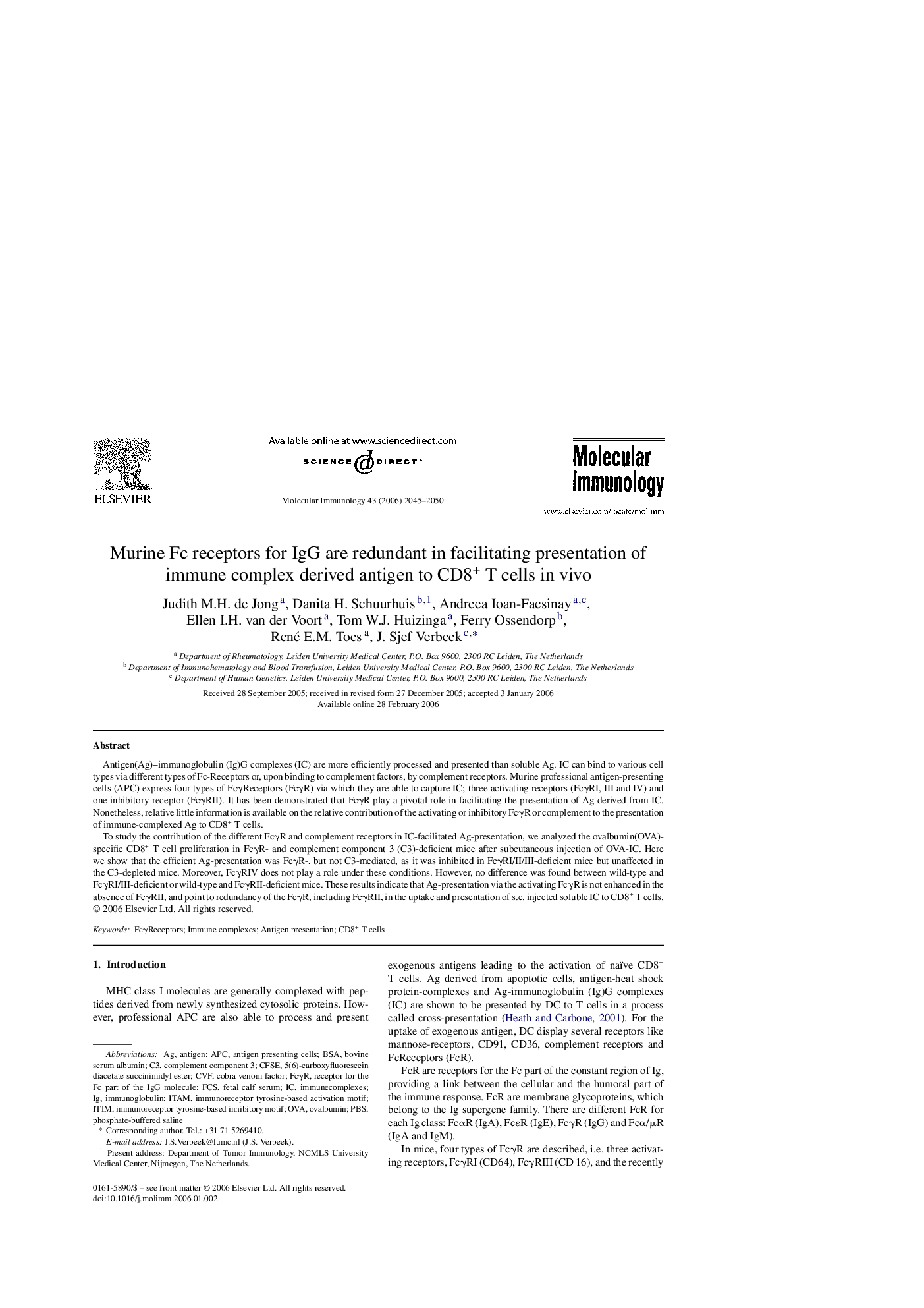| Article ID | Journal | Published Year | Pages | File Type |
|---|---|---|---|---|
| 2832776 | Molecular Immunology | 2006 | 6 Pages |
Antigen(Ag)–immunoglobulin (Ig)G complexes (IC) are more efficiently processed and presented than soluble Ag. IC can bind to various cell types via different types of Fc-Receptors or, upon binding to complement factors, by complement receptors. Murine professional antigen-presenting cells (APC) express four types of FcγReceptors (FcγR) via which they are able to capture IC; three activating receptors (FcγRI, III and IV) and one inhibitory receptor (FcγRII). It has been demonstrated that FcγR play a pivotal role in facilitating the presentation of Ag derived from IC. Nonetheless, relative little information is available on the relative contribution of the activating or inhibitory FcγR or complement to the presentation of immune-complexed Ag to CD8+ T cells.To study the contribution of the different FcγR and complement receptors in IC-facilitated Ag-presentation, we analyzed the ovalbumin(OVA)-specific CD8+ T cell proliferation in FcγR- and complement component 3 (C3)-deficient mice after subcutaneous injection of OVA-IC. Here we show that the efficient Ag-presentation was FcγR-, but not C3-mediated, as it was inhibited in FcγRI/II/III-deficient mice but unaffected in the C3-depleted mice. Moreover, FcγRIV does not play a role under these conditions. However, no difference was found between wild-type and FcγRI/III-deficient or wild-type and FcγRII-deficient mice. These results indicate that Ag-presentation via the activating FcγR is not enhanced in the absence of FcγRII, and point to redundancy of the FcγR, including FcγRII, in the uptake and presentation of s.c. injected soluble IC to CD8+ T cells.
